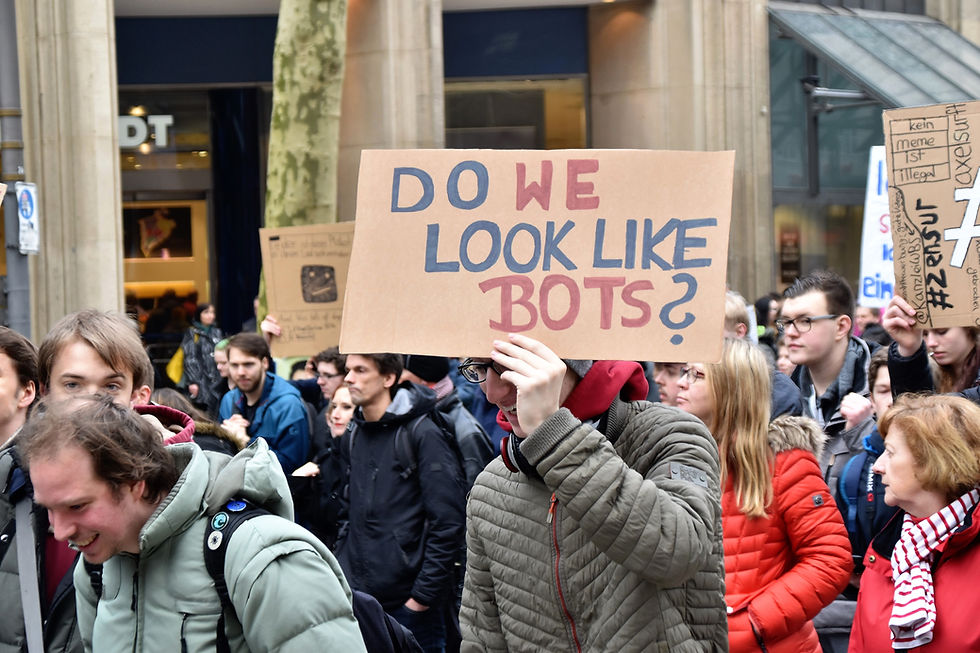AI isn’t breaking people. Bad leadership is
- Anastasia Dedyukhina

- 6 days ago
- 3 min read
Digital transformation isn’t failing because of bad code. It’s failing because of bad leadership.

And nowhere is it clearer than in what happened at Commonwealth Bank of Australia.
In 2024, a veteran employee of 25 years helped build the bank’s chatbot — and then lost her job to it. The bank then cut 45 customer-service roles, claiming an AI “voice-bot” would handle the calls. It couldn’t. It was making mistakes and driving clients crazy — a year later the bank had to reverse the decision and rehire. But the reputation was damaged.
What happened was not a failure of digital transformation/AI implementation — it was a failure of leadership. When the leadership puts technology in front of people, problems happen.
And this is happening more often than we think. We have a massive leadership crisis.
An astonishing 95% (yes, you have read it right — ninety five percent) of gen-AI pilots failed in companies, according to MIT.
Around 76% of medium-to-large businesses now report using digital monitoring tools for employees.
In the U.S., 90% of firms say they use algorithmic management tools (tracking performance, monitoring behaviour).
And yet: over 56% of monitored workers report feeling tense or stressed.
This reflects a total misunderstanding of leaders of how to use digital tools to support people and where productivity and wellbeing come from. Spoiler: when you monitor to control, you often end up with mistrust, fatigue, and burnout — not increased productivity.
Just look around:
At Amazon, warehouse workers’ every move is tracked — AI decides when someone is “too slow.” The result? Turnover rates as high as 150% a year in some centers.
At UPS, drivers protested new tracking systems that monitored how often they paused or opened the truck door, creating constant anxiety and “fear of the algorithm.”
At British Telecom, a digital tool meant to optimize remote work started flagging employees for “low activity” — even when they were on client calls. The backlash forced leadership to apologize publicly and adjust the system.
None of these are failures of technology. They are failures of leadership judgment — mistaking control for clarity.
I’ve seen smaller versions of the same story inside teams everywhere. A leader rolls out a new project tool — “Here’s the link, start using it” — and disappears. Or they monitor productivity through dashboards while never asking: “Are you okay?” Or they sit at the head of a meeting, phone in hand, glancing down between every sentence. Each of these moments sends the same message: you’re not my priority. And that’s what drains people — not the tool, but the signal. Throwing more tech at problems that should be solved without tech (for example, because of internal inefficiencies). Adding new tools that increase information flow instead of prioritizing employees’ attention.
And the irony? These leaders often see themselves as modern and data-driven (AI-first, or insert a new buzzword). But behind every shiny dashboard, there’s a tired human quietly thinking: “Does anyone here still care what I'm doing here?”
Now imagine a different kind of leader. One who says, “Let’s learn this together. It’s okay to make mistakes.” One who puts the phone away and listens fully. One who treats attention as respect, not a resource to divide, and makes focused hours without constant interruptions part of the company policy.
They don’t announce another AI rollout on Monday and wonder why people resist on Friday or call a consultant/coach to "fix it". They co-create it — involving teams early, asking what slows them down, what excites them, and where tech can actually help. They measure trust, clarity and attention, not just output or hours spent in front of the screen.
They aren't asking people to work faster because everyone with AI is working faster. Instead, they wonder which processes they actually need to speed up, and which they need to eliminate — because AI will just amplify all the bu...hit you are already doing in the workplace, not solve it.
That’s what real digital leadership looks like. It turns change from chaos into confidence. Because people don’t burn out from technology — they burn out from how they’re led through it.
Join me and other two women who first built a successful career in tech and later became digital wellbeing experts for a masterclass on How to be a digital wellbeing leader in 2026. Thursday 13th November 4-5pm UK time. Register here (free).






Comments